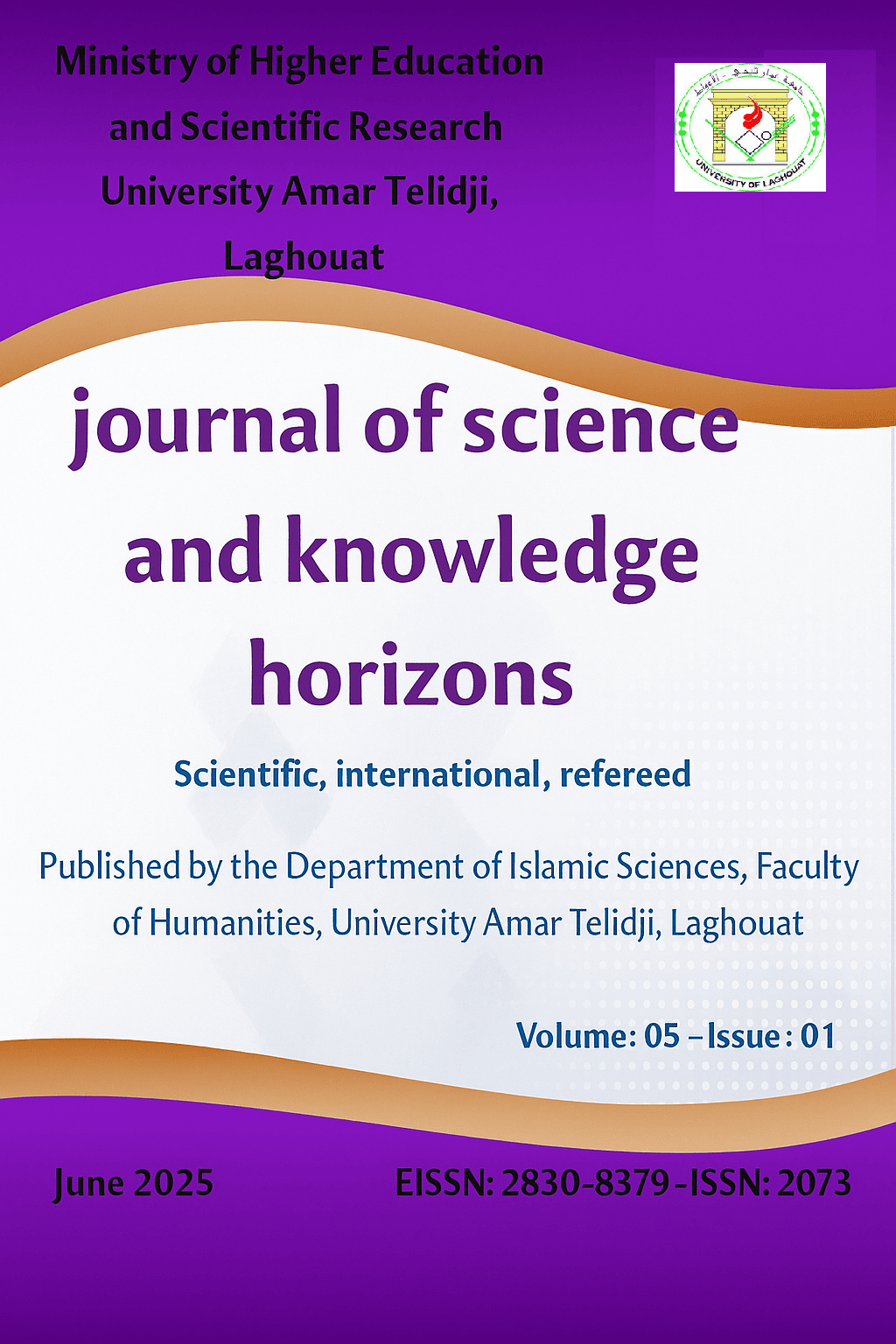The Role of Teaching Arabic Literary Texts in Enhancing Oral Fluency for Advanced Learners According to CEFR Standards: The Case of KSU.
Abstract
This study investigates how Arabic literary texts can improve oral fluency and rhetorical awareness among advanced learners (C1-C2) according to CEFR standards. The research explores how engaging with literature can lead to more transparent and precise oral expression, reducing ambiguity and unnecessary embellishments. A 12-week intervention program was designed, including targeted lessons on rhetorical devices and text analysis. Using a mixed-methods approach, the study analysed quantitative data from pre- and post-intervention assessments with SPSS and qualitative data from classroom discussions and instructor interviews with NVivo. The findings show significant improvements in oral fluency, vocabulary use, and clarity of expression. Students demonstrated enhanced rhetorical awareness and improved ability to engage and persuade their audiences. This study emphasises the effectiveness of literary texts in promoting advanced oral proficiency and suggests further research into their role in developing other language skills.
Downloads
References
2. Al-Tamimi, H. (2012). Teaching literature to foreign language learners: A medium to bridge the gap between cultures. Education, 2(7), 296-305. https://doi.org/10.5923/j.edu.20120207.12
3. Byram, M., Nichols, A., & Stevens, D. (Eds.). (2001). Developing intercultural competence in practice (Vol. 1). Multilingual Matters.
4. Carter, R., & Long, M. (1991). Teaching Literature. London: Longman.
5. Cook, V. (2016). Second language learning and language teaching. Routledge.
6. Council of Europe. (2001). Common European Framework of Reference for Languages: Learning, Teaching, Assessment. Cambridge University Press.
7. Duff, A., & Maley, A. (2007). Literature. Oxford: Oxford University Press.
8. Habash, N. (2010). Introduction to Arabic natural language processing. Morgan & Claypool Publishers.
9. Kramsch, C. (1993). Context and Culture in Language Teaching. Oxford University Press.
10. Kramsch, C., & Widdowson, H. (1998). Language and culture: Oxford University Press. David Johnson – English Department, Kennesaw State University, Georgia, Cult, Adult ESL.
11. Lazar, G. (1993). Literature and Language Teaching: A Guide for Teachers and Trainers. Cambridge: Cambridge University Press.
12. Littlewood, W. (2004). The Task-Based Approach: Some Questions and Suggestions. ELT Journal, 58(4), 319-326. https://doi.org/10.1093/elt/58.4.319
13. Mohamed, A. H., & Omer, M. R. (2000). Texture and culture: Cohesion as a marker of rhetorical organisation in Arabic and English narrative texts. RELC Journal, 31(2), 45-75. https://doi.org/10.1177/003368820003100203.
14. Parkinson, B., & Reid Thomas, H. (2019). Teaching Literature in a Second Language. Edinburgh University Press.
15. Roslan, N. N. A., & Sahrir, M. S. (2020). The effectiveness of ThingLink in teaching new vocabulary to non-native Arabic language learners. IIUM Journal of Educational Studies, 8(1), 32-52. https://doi.org/10.31436/ijes.v8i1.274
16. Schmidt, R. W. (1990). The Role of Consciousness in Second Language Learning. Applied Linguistics, 11(2), 129-158. https://doi.org/10.1093/applin/11.2.129
17. Widdowson, H. G. (2014). Stylistics and the Teaching of Literature. Longman.
18. Zimmerman, C. B. (1997). Historical Trends in Second Language Vocabulary Instruction. In J. Coady & T. Huckin (Eds.), Second Language Vocabulary Acquisition. Cambridge University Press.

This work is licensed under a Creative Commons Attribution-NonCommercial 4.0 International License.






